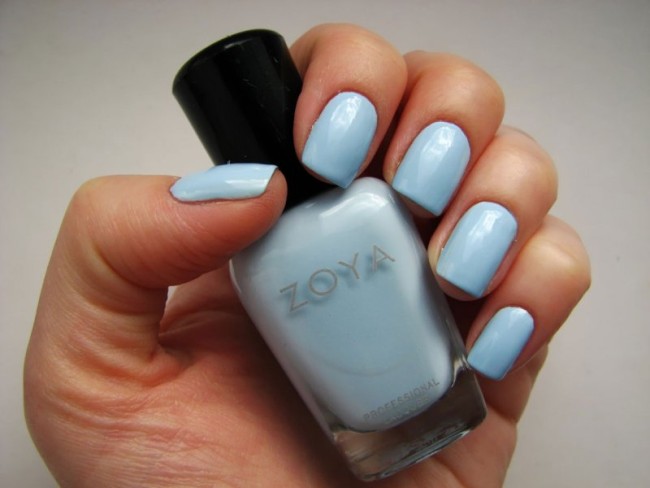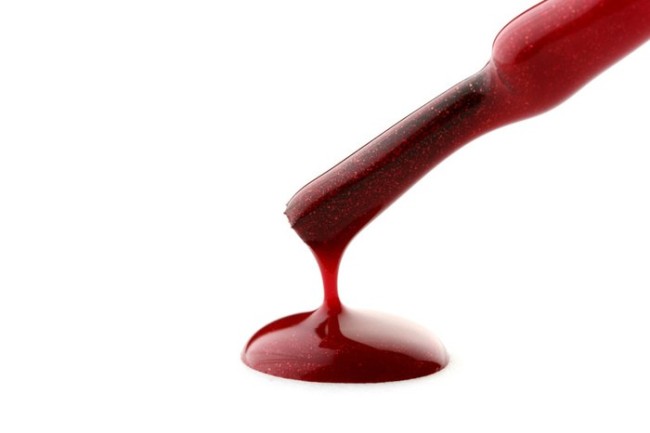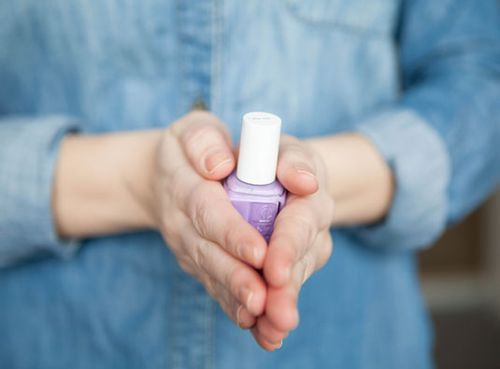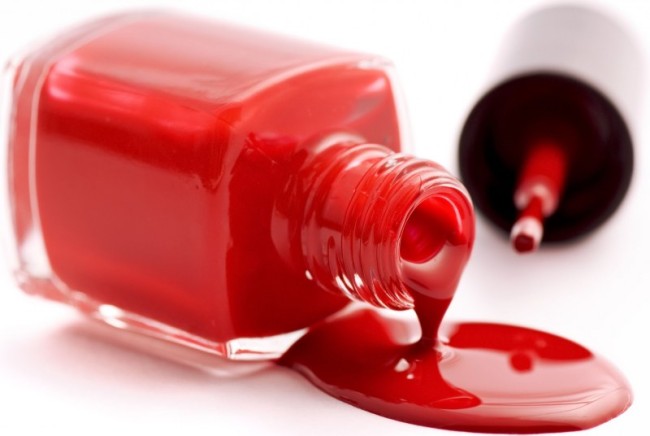We all remember our admiration when in the chemistry lesson we were explained to us as a dangerous substance - acid, with one movement of the hand with a test tube with a alkaline irrevocably turn into water. But if chemistry, as a science for many, remained beyond the facet of understanding, then we definitely understand the household, however, a girl? Nevertheless, one of the most painful questions remained somewhere there, next to the awareness of the miracle of turning the acid into water: if the nail polish thickens, how to effectively dilute it? After reading this text, you will receive a detailed answer to this question.
Content
How can you dilute the nail polish at home
Often we find a dried varnish of our favorite color at the most inopportune moment: you urgently need to paint your nails, and there is time only for drying (of course, with a special drying for varnish, only with a hairdryer). Here are a few simple tips on how to dilute the varnish at home.
- Heating. If you diligently engaged in chemistry lessons, you probably clap yourself on the forehead from the obviousness of this procedure. For those who have forgotten, what is the process of diffusion, I recall: when heated, molecules in any substance begin to move more actively, the connections between them are collapsing and the bodies that are firmly previously are able to take liquid and even gaseous state. It is enough to place a bubble with thickened varnish in a bowl of warm water for a few minutes or just warm in your hands - for example, roll in your palms and at the same time arrange gymnastics with your fingers. However, the effect may not last long: already once dried varnish will never become the same.
- Use fluid to relieve varnish. What does not kill us, makes us stronger - this rule, as well as strangely, is 100 %to the nail polish. If in particular cases (i.e. on your nails) this liquid is able to negate any thickness, then when several drops are added to the jar, it will make the nail polish not only more liquid, but also shiny. However, such a transformation has several features that you should know about: firstly, if you overdo it with injections, then the varnish can become watery and spread evenly along the nail, regardless of the amount of applied; Secondly, after some time, the varnish can begin to secrete the pigment, or in other words-to be divided. This trifle is easy to fix, shaking the jar, while its contents will not be ruined irrevocably. But be careful! It is desirable that the liquid to relieve varnish is without acetone, otherwise your manipulations will extend the life of your favorite bottle only at a time.
- Solvent for paint. When delicate girlish jokes do not work, heavy artillery is used. You will most likely find a solvent among the engineering lotions of your father, husband, brother and in general any representative of the stronger sex. However, I do not advise you to personally deal with him - with a solvent, in the sense. This thing is poisonous enough to harm you with careless handling. In your place, I would think whether a jar of dried, albeit my favorite varnish, to try on a respirator and thick rubber gloves, go out onto the balcony or completely on the street in order to get a dangerous liquid and gently squeeze out a couple of droplets ( Being still in thick gloves!) In a narrow hole of the bubble. Think, cute girls, whether it is worth a sheepskin. You can, of course, purely in a way to puzzle a man, or you can take money and buy exactly the same (or even better), only a new, perfectly liquid nail polish.
How to dilute the nail polish: what to do so that the nail polish remains for a long time?
- Store at room temperature (within 20 degrees Celsius) and certainly not in the refrigerator.
- The advice arising from the previous one: do not paint your nails in front of an open window or in the cold. The temperature differences towards the cooling, as well as active saturation with oxygen, can negatively affect the varnish that you apply to the manicure. For example, it can be covered with bubbles or crumple directly on the surface of the nail. And in a jar at this time, unpleasant lumps will begin to appear, from which it will not be so easy to get rid of.
- From time to time, sort out bubbles with valuable liquid, slightly shaking them and shaking them. So you will not only save your favorite varnish, but also do not let the brush go bad.
- Actively use! Many might think that each use of varnish (read: opening a jar) is little by little driving it. This, of course, is so, but there is one “but”. If you open a jar, oxygen falls into it, which means that chemical elements are exchanged. Of course, it is not recommended to leave varnish in the open air for a long time. And on the other hand, thanks to the “fresh air”, the diffusion process described above is accelerated, which does not give acetone, which is part of the nail polish, absorb the colored pigment. In other words: the more often you get a brush of varnish, the more it breathes - and does not dry, as you might think.
- Be careful! Do not store nail polish close to the sun. Ultraviolet rays not only change the color of your skin, but also the color of your nail polish. The pigment is changing, the varnish begins to be relaxed. Better hide such good in a dark place.
How to dilute the varnish: a means to dilute varnish, features of use
You can tirelessly wore what amazing time we live in, but nothing can be compared with an immutable confirmation of this fact: when the dried varnish, as by the wave of a magic wand, turns again into a new (well, or almost). The main magic, in this case, is the means to dissolve varnish, and this is the most correct way to dilute the varnish. What kind of wonder what is this?
A means to dilute the varnish or, as it is also called, the varnish fluid contains three main components: ethyl acetate, butyl acetate and isopropanol. The first two substances are broadcasts, i.e. liquids that evaporate very quickly, the third is alcohol. Because of them, the diluent, as a rule, is sharp, perhaps even slightly gasoline (propanol) smell, if the substance does not include a fragrance. In order for the flying liquid to be stored for a long time and not evaporated, it cannot be left without a lid for a long time. There is a fluid for varnishing varnish, as a rule, similarly to the corresponding volume of varnish.
What is the secret of dilution for varnish? It has a similar chemical composition, as well as nail polish! Acetates are indispensable components in your favorite manicure coatings. Therefore, sometimes they are also advised to dilute varnish with other nail polish - a similar shade or transparent. But you understand that from this it will lose some of its properties: the color will change, the reflection will worsen, the varnish will become more muddy ... We give advice here on how to return your nail polish to life, and not make it “zombies” from it - The "revived" remains of your favorite varnish.
Instructions for using such solvents, as a rule, are written on the bottle. If for some reason you are absent, this is how it should be addressed:
- It is necessary to add 2-3 drops to a jar of varnish, close it tightly-both a bottle with a liquid and a bubble with nail polish-and shake. If its density still does not suit you, repeat the procedure.
- Do not add a lot of fluid to breed varnish at once! You risk making your favorite color excessively liquid and because of this not functional.
- Keep the liquid in a place not available to children, sunlight and open fire, because It contains poisons and alcohol.
- Do not try to freeze the solvent! Especially if it is in a glass bottle. Drive not only a tool for breeding nail polish, but also a refrigerator.
- With proper circulation, such tools are stored for several years, so do not worry if the bottle seems too large for you. You will have time to use several varnish bubbles, and the liquid for dilution will remain with you as a true long -term assistant.
And the last advice on how to properly dilute the nail polish: if possible, buy a liquid for breeding the dried varnish of the same company as the nail polish itself. There is no significant difference in this, but the substances that make up both the varnish and the solvent will be of the same origin, and this is a matter of impurities, concentration, etc. Therefore, it is better to choose a “relative” to help than the cheapest dilution tool that can consist more of gasoline than the solvents.
How to dilute gel polish and acrylic varnish
The unification of these two types of varnish is justified, because in the chemical composition they have one essence. In fact, shellac-the most common gel polish-contains components of acrylic paint. The difference between them is that gel polish is less to phenomenon in its composition. But the main question that must be worried: is it possible to dilute gel polish at home? The search for a means for liquefaction will be fundamentally different from the diluent of the usual nail polish. If you have used such new products for the care of manicure, then you know that gel polish and acrylic varnish are much more aggressive than ordinary nail polish. But due to this, such coatings are rushed much longer. Why do acrylic and gel polishes dry?
- Finding a bottle under the influence of ultraviolet rays (near UV lamp or in the sun).
- Nail polish was stored in warmth.
- It has dried from non -compliance with the elementary rule: tightly close the varnish lid!
How to dilute the dried gel polish and acrylic varnish? Perhaps the only everyday product suitable for gel polish is ethanol, or ethyl alcohol. In the pharmacy you can find liquid with antiseptic properties based on this alcohol. In order to dilute the acrylic nail polish, they say, you can use a liquid to dilute the varnish. However, I would advise in both cases to turn to professional means, namely, liquids for the dissolution of gel and acrylic varnishes. The principle of “add liquid varnish to dilute the dried” can also work, but read the consequences above.













Comments
a couple of years ago, there was no side of metrogils from the same problem, there were no side effects ...
I’m not a fan of peeling at all, it saves from acne of metrogil, it also smoothes it ...
Great article! ...
I take the second course of the Capsules Climafite 911. The tides went very quickly. It became calmer, irritability went away and I sleep well ...
i also noticed - it is worth nervous, everything immediately affects the face. Therefore, I try to avoid conflicts and unpleasant people. Of the creams, I like Miaflow from wrinkles - smoothes not only small wrinkles ...